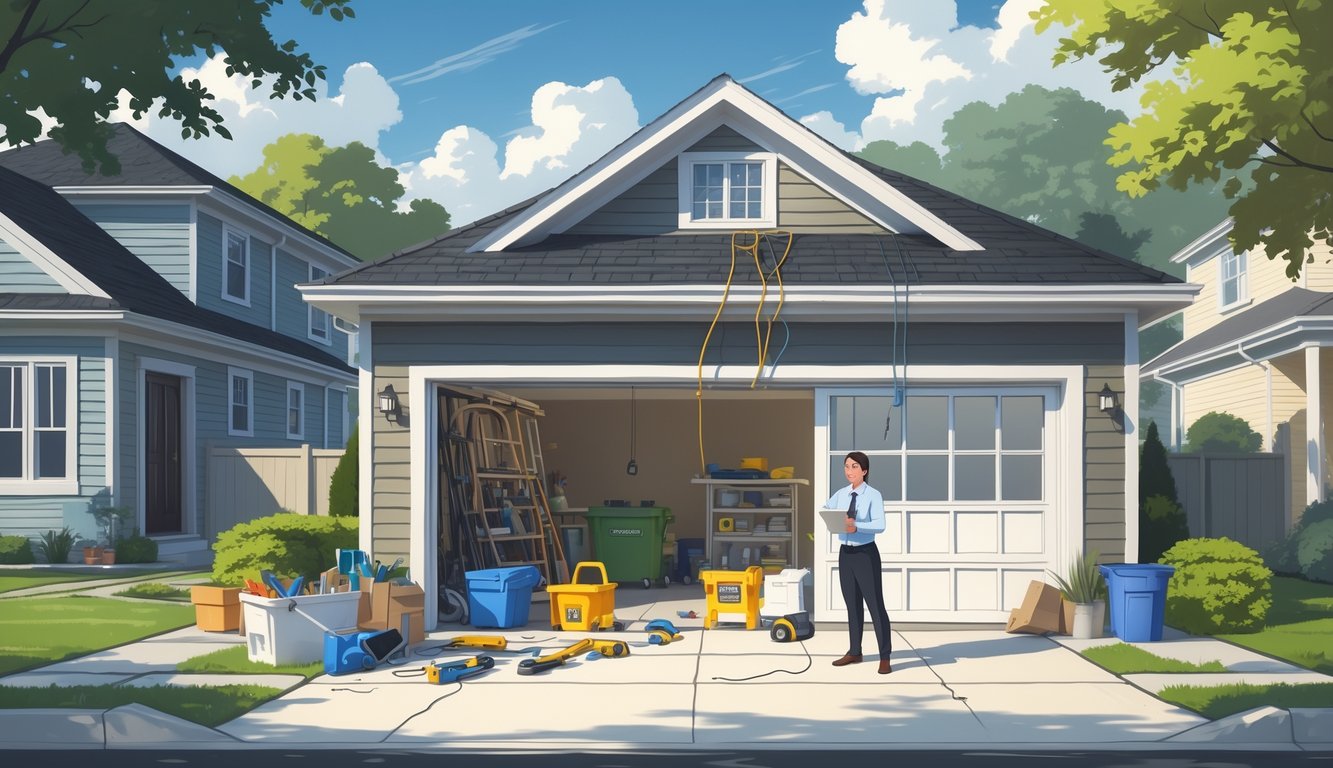
Unpermitted Updates and Renovations
I can’t stand it—those “not yet permitted” sticky notes left on the kitchen counter. Like, what’s that supposed to do? If you finish a garage or mess with electrical without a permit, you might as well wave a red flag. Insurance, city inspectors, lenders—they all run for the hills.
Realtors (and yes, lawyers) always warn you: skip permits, risk fines and resale disaster. Buyers check records and get suspicious fast. Lenders? They’ll freeze your deal in a heartbeat if they sniff out an unpermitted garage conversion. I’ve watched people lose offers over this exact mess. Appraisers won’t count your “bonus room” as real square footage if it’s not legal. That’s not a rumor.
One appraiser told me illegal renovations can drag your value below similar homes, even if you’ve got fancy floors. Powell Renovations basically spells it out—no zoning, no paperwork, and you might have to undo the whole thing before you can sell. That’s brutal. And for what? A room nobody can legally use.
Neglecting Security and Maintenance Elements
It’s always the tiny stuff that trips you up. Like, who loses sleep over a squeaky door? But real estate investors and insurance agents? They never shut up about this. You think a rusty lock’s no big deal until an inspector wants you to explain it. Or worse, until the buyer’s agent starts texting behind your back.
Old Garage Doors
I’ll never forget my neighbor’s ancient garage door—it creaked so loud you could hear it three houses away. Buyers and inspectors see that and think, “Neglect.” The National Association of Realtors claims a new garage door can almost pay for itself at sale. Not that anyone listens.
Outdated doors are drafty, and if you store anything inside—good luck keeping it safe or unfrozen. Most doors over 15 years old can’t pass a security check. Insurance adjusters will nail you for that. I still have a spreadsheet from a garage door guy—repairs get expensive past the 10-year mark. Hinges rust, openers die, and suddenly you’re scrambling at closing. Spend the $1,300 on a new, insulated door. Trust me, nobody brags about cracked panels.
Weak Garage Security
Ever try to jimmy your own keypad? I have, and it’s way too easy. MLS records are full of deals lost over garages with bad security—single-pin locks, broken deadbolts, or windows anyone could crawl through. I toured a place where the side door popped open with a spoon. The agent wanted to die.
Modern security isn’t rocket science—smart locks, reinforced plates, motion lights, basic sensors. But people trust $6 padlocks and call it good. Google it—burglars love garages. And don’t get me started on those pet doors or WiFi cameras that die when the power’s out.
Buyers whisper about “sketchy” setups, and insurance companies will slap you with a “high liability” label for skipping a $90 upgrade. Just get a camera with cloud backup. And stop hiding spare keys under the mat. Seriously, just don’t. Sometimes the paranoid neighbor is right—forums are full of these warnings for a reason.
Lack of Regular Maintenance
Nobody cares about the squeak—until it’s inspection day and suddenly everyone’s panicking. Garage maintenance gets ignored for years, then you wonder why the sale’s dead. My worst open house? Chipped paint, cracked epoxy, dangling wires. Buyers vanished.
People act like garages don’t count, but inspectors always check door tracks, frayed cables, missing safety stickers—the little stuff that screams liability. If you don’t lube the moving parts every spring or check for rodents, you’re just asking for trouble.
When the HVAC guy says humidity’s so high your drywall is warping, that’s not a tiny fix. Data shows deferred maintenance kills buyer confidence and appraisals. Regular checklists and a $20 can of silicone spray are better than a last-minute scramble. And why does everyone forget garage ceilings exist until there’s a leak? Wild.
Overpersonalized or Inefficient Design Choices
It’s infuriating—watching a slick garage remodel crash your home’s value because it’s tailored to someone else’s weird taste or just doesn’t work for normal life. No paint job or glossy floor saves a space that fights how people actually live.
Excessive Personalization
I saw a garage last winter that was basically a shrine to Jaguars—British racing green, diner stools, old car posters. Cool, I guess, if you’re into that. But try selling it to someone with a Honda and a lawnmower. Custom cabinets for model trains, neon bars—Realtors literally cringe.
Did you know 65% of homeowners regret at least one thing about their garage remodels, according to finehomesandliving.com? Shouldn’t surprise me, but it does. If your “home gym” is bolted to the floor, what’s the next owner supposed to do—turn it into a workshop? Permanent murals and hobby nooks just scream “expensive to undo.” They never stay “cool features,” they just become “problems.”
Inefficient Use of Space
DIY garages with shelves everywhere—ever try to open a car door in those? Storage is great until it’s too much and blocks everything. Someone ran conduit across a window for “smart lighting” and made the place feel like a bunker. “Smart” can mean “overkill.”
Friends swear by “showroom” setups—glossy tiles, fancy lights, but they waste usable space. I once had to crawl under a racing simulator to find the circuit box because someone hid it behind wall art. Good luck reselling that. Amarr says the door gives the best return, but what about the inside? Heavy built-ins and gym gear make future changes expensive.
Flexible shelves? They’re cheap and actually adapt. But nobody mentions that until your “dream garage” is now the most annoying room in the house.